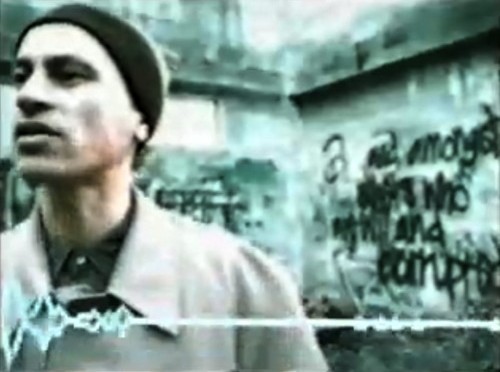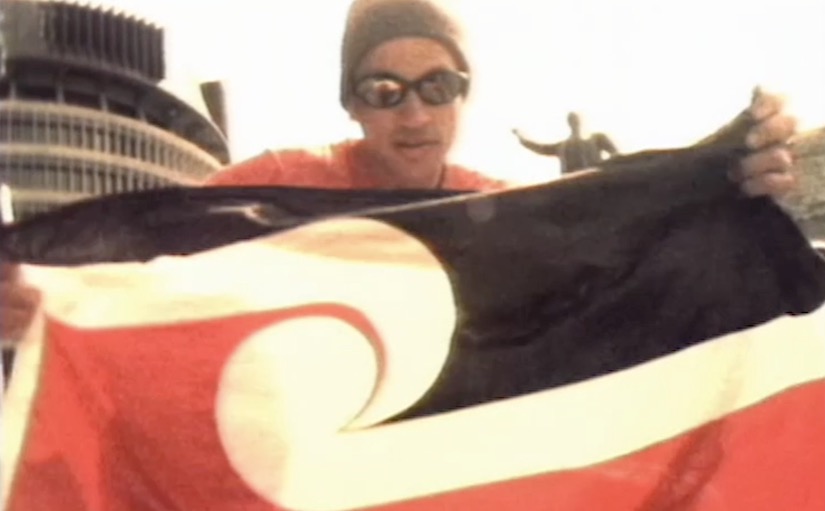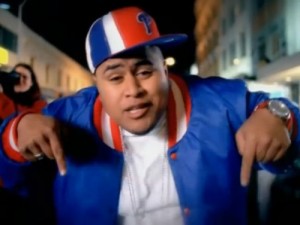 Well, there’s a lot going on in this video. The video starts with a prologue – Dei Hamo and pals sitting in a car parked in the pedestrian area outside the Britomart Transport Centre. After declaring that there’s no “new sound”, the four discover that – hey – you can make cool noises with things inside a car. This suggests that none of them have ever been a bored kid waiting inside a car.
Well, there’s a lot going on in this video. The video starts with a prologue – Dei Hamo and pals sitting in a car parked in the pedestrian area outside the Britomart Transport Centre. After declaring that there’s no “new sound”, the four discover that – hey – you can make cool noises with things inside a car. This suggests that none of them have ever been a bored kid waiting inside a car.
After a minute of that, the song proper kicks off. Most of the action takes place in and around Commerce Street in Downtown Auckland, right in front of the bookshop selling cute Asian stationery. There are cars galore, along with boys and girls who are just as much into cars as Dei Hamo is. He’s pestered by the media (with one reporter played by Jane Yee) but just as things seem about to get boring, they instead get weird.
There’s Dei Hamo and Chong Nee dressed as military generals standing in front of a big wall of shiny mag wheels, Dei Hamo in white-face as Paul Holmes having a dig as the notorious “cheekie darkie” comment, Dei Hamo relaxing with an underwear-clad model in an RV. And then there’s Matthew Ridge excitedly boogieing down with the boys.
At the time the video came out, it all seemed very exciting. As Duncan Greive says over at Audio Culture, this is what big flashy hip hop videos were like at the time. It takes a lot of effort to make a video like this (the video reportedly cost over $50,000), but Chris Graham and Dei Hamo pulled it off. And yet… as Greive also observes, “something about the cumulative impact feels a little overblown – like, this is New Zealand. We can’t possibly afford to live that life.”
It looks like a world created for a music video, rather than an actual depiction of a blinged-out good life. The song was number one for five weeks, in that remarkable time in 2003-2005 when eight New Zealand hip hop songs made it to number one before the trend flipped over to reality TV show winners. And now, 10 years later, the world of “We Gon’ Ride” seems like ancient history, that time when entertainers used to dress up and dance around cars.
Best bit: Dei Hamo holds up a fat wad of Rutherfords.
Director: Chris Graham
Ngā Taonga Sound & Vision
And with this blinged-out extravaganza, I’ll end the year. 5000 Ways will now take its annual break, back on Monday 20 January right in the midst of that particularly fruitful time for New Zealand music in the pop charts. As always, thanks to you, dear reader, and to everyone who’s commented and shared stories, and to all the people who’ve tracked down old videos and got them online. Merry Christmas, happy New Year and see you in 2003!
- Robyn
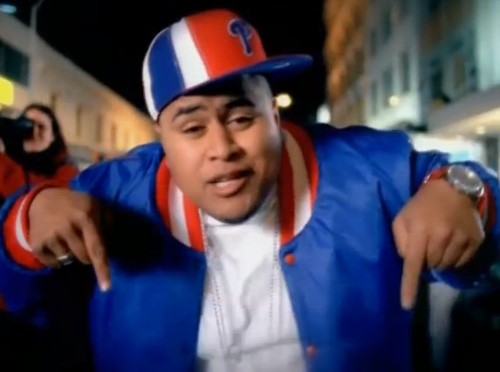

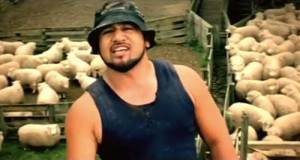 A giant crown-shaped cloud overs above the setting of this hip hop video: it’s a farm. It’s not the first time a New Zealand hip hop video has used this unconventional location. In 2000 Dark Tower’s
A giant crown-shaped cloud overs above the setting of this hip hop video: it’s a farm. It’s not the first time a New Zealand hip hop video has used this unconventional location. In 2000 Dark Tower’s 
 First, two comments from YouTube –
First, two comments from YouTube –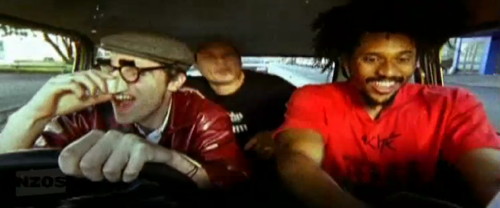
 The “Clav Dub” video plays tribute to the legendary New Zealand film “Goodbye Pork Pie”. With the group filing out of a local WINZ office, they spy a familiar yellow Mini that the original Blondini (Kelly Johnson) has left while he pops in to a dairy. Enticed by a big-arse speaker in the back, the trio take off in it. Blondini seems a but miffed, but, well, he’s experienced worse.
The “Clav Dub” video plays tribute to the legendary New Zealand film “Goodbye Pork Pie”. With the group filing out of a local WINZ office, they spy a familiar yellow Mini that the original Blondini (Kelly Johnson) has left while he pops in to a dairy. Enticed by a big-arse speaker in the back, the trio take off in it. Blondini seems a but miffed, but, well, he’s experienced worse.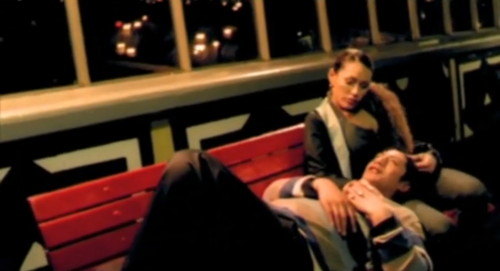
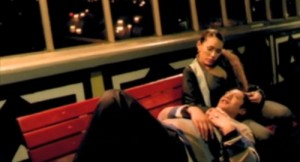 Oh, remember those days? When life was a bit easier? P-Money and Scribe do. The video has a bit of set-up to do before the song can start (a whole minute of set-up). First we see Scribe doing some freestyle rhyming with his circle of mates, as director Chris Graham’s camera circles the group. I get the feeling this was a spontaneous thing that happened on the day of the shoot.
Oh, remember those days? When life was a bit easier? P-Money and Scribe do. The video has a bit of set-up to do before the song can start (a whole minute of set-up). First we see Scribe doing some freestyle rhyming with his circle of mates, as director Chris Graham’s camera circles the group. I get the feeling this was a spontaneous thing that happened on the day of the shoot.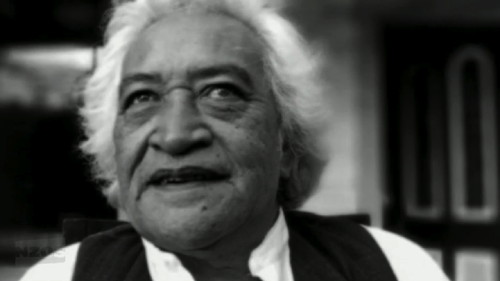
 This video can be simply summed up as an old man reflecting on his life. But it’s oh so much more than that.
This video can be simply summed up as an old man reflecting on his life. But it’s oh so much more than that.
 After Salmonella Dub’s
After Salmonella Dub’s 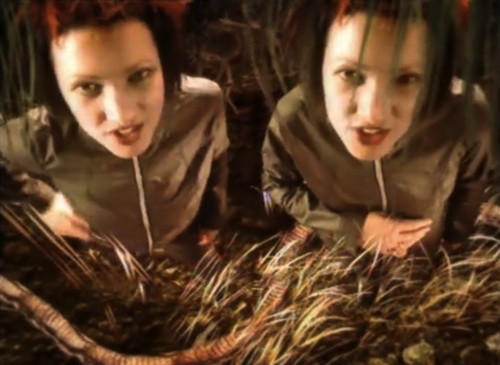
 The video opens with the startling image of Julia Deans with glowing orange eyes, holding up a comedy voodoo doll. Just what is going on here?
The video opens with the startling image of Julia Deans with glowing orange eyes, holding up a comedy voodoo doll. Just what is going on here?